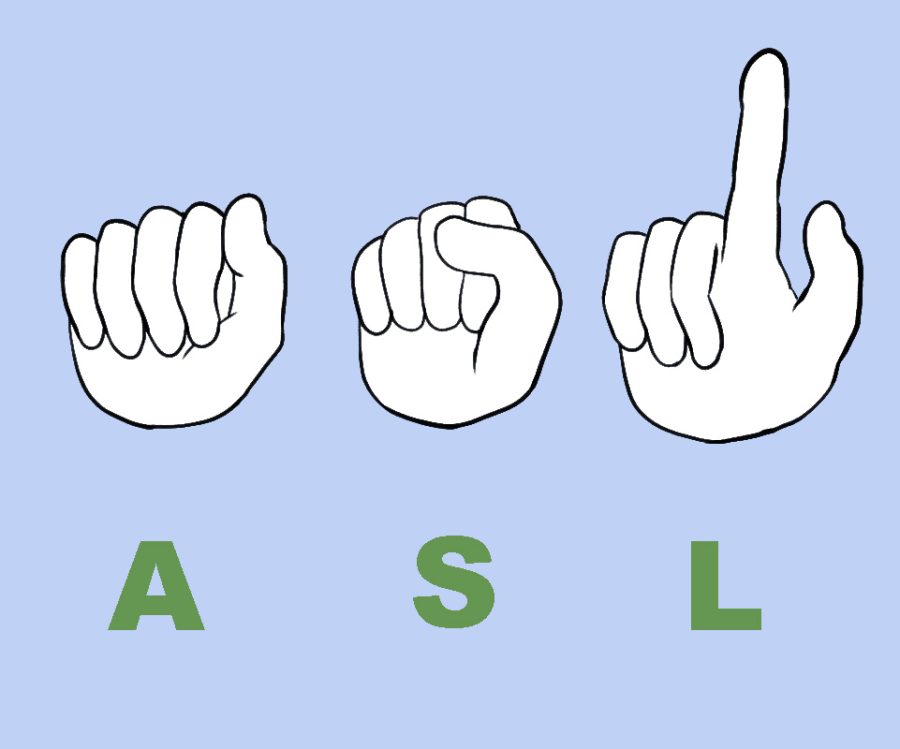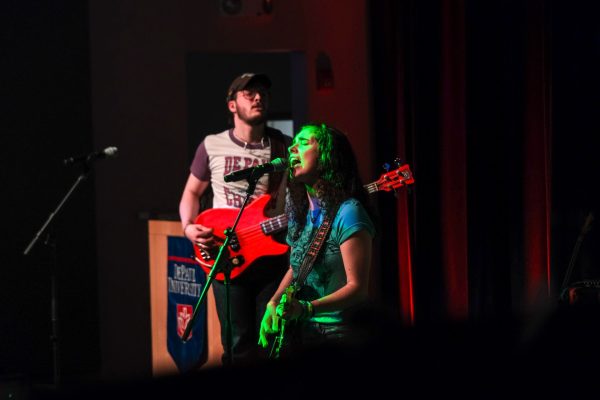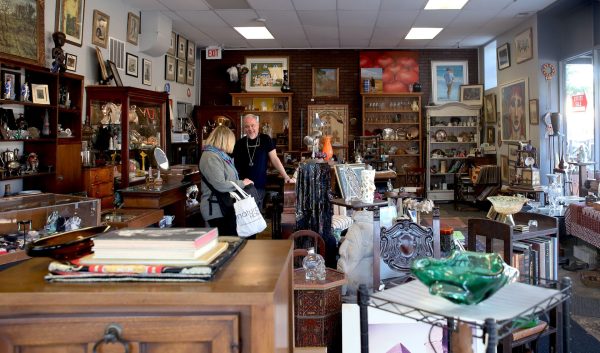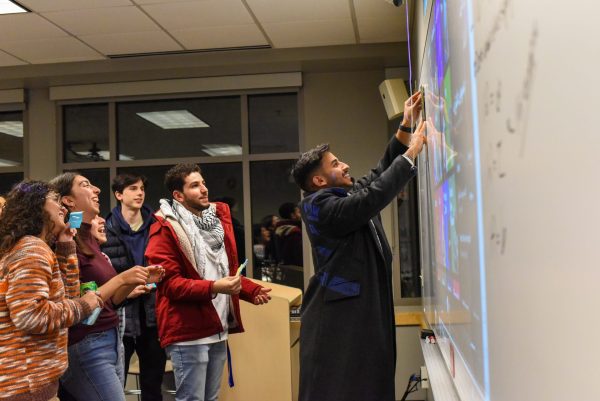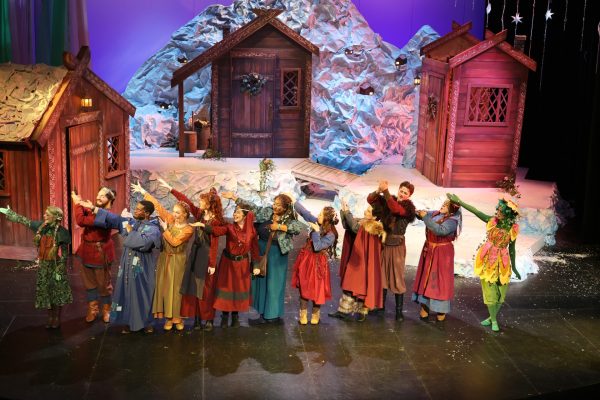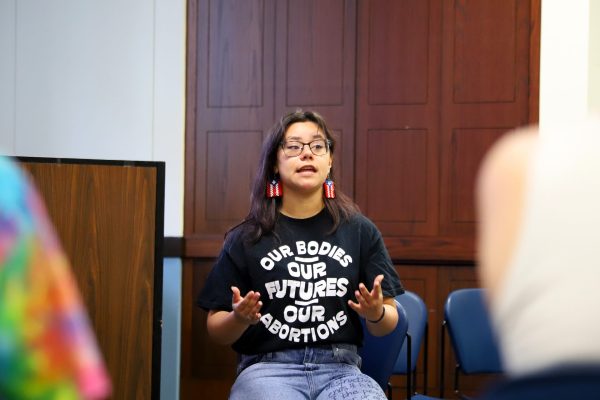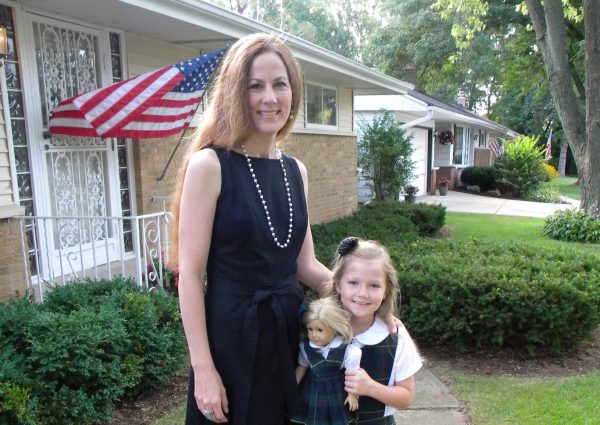Deaf Awareness Month at DePaul: AI bridging communication gap
Maya Oclassen for The DePaulia
American sign language (ASL) is one of 300. Depaul offers many levels of ASL for students interested.
“Paula” the AI avatar was created at Depaul 15 years ago, revolutionizing communication for the deaf and hard of hearing. The technology has been used for American Sign Language (ASL) translation, in everyday experiences and times where a translator is not available.
The start of September marks the start of Deaf Awareness Month: a time to celebrate the history and culture of the Deaf community. Sign language is used by 70 million deaf people worldwide, according to the United Nations. At DePaul American Sign Language, ASL, is taught at multiple levels for students interested in connecting and communicating with the Deaf community.
“The bridge of communication is very important,” PHD student Maria Saenz said when talking about DePaul’s American Sign Language Avatar Project. Saenz has been a part of the team working on the project since her first year.
Paula, is “a non-invasive technology to bridge the gap between the two communities especially in times of need like, for example, PSA announcements or public works, traveling or maybe as an intermediary tool.”
The project was founded in 1999 by Rosalee Wolfe and Dr. John McDonald at DePaul. Wolfe stated that the project was inspired by a Deaf student who told her about the need for a bridge in communication between the Deaf and hearing community.
“A Deaf student, Karen Alkoby, came to me with the idea of using technology to help bridge the communications barrier that she was experiencing at her workplace,” Wolfe said in an email interview.

The technology was created as a tool to be used by deaf and hard of hearing individuals in everyday life or instances where a translator is not accessible for a brief interaction.
One of the most important goals of the Avatar project is effective and accurate communication technology using American Sign Language, ASL. It also utilizes the important constructs of the language, including non-manual signals, verb conjugation, classifiers and pronouns, and role shifting.
The technology is similar to an interpreter because it translates English to ASL immediately; however, it is not meant to replace interpreters, as they are trying to incorporate aspects of an interpreter’s role into the avatar, without trying to have it take their place.
“That’s what we are trying to get more data on…non-manual signals like mouthing and shoulders, the things that interpreters do, what they are so important for. They are there not just to interpret what was said, they are also interpreting emotion and engagement,” Saenz said. “How do you get a whole human in an avatar? How do you range, how do you show happiness, how do you show mouthing. How do you show sadness, not just through your face but your eyes.”
Saenz said the project will likely not reach an end date but will be changing and improving. Many students have worked on the project across many majors, including computer science, animation, and others.
“I think this project will always be evolving and we need to continuously be working on it being accepted by the people who are going to use it and the people that they are serving,” Saenz said, “So I do not think it will ever be done, we will just try to incorporate our avatar in spaces that we can assist.”
ASL is taught at DePaul, and available to students interested in the language and Deaf culture. Dana Demeter, the American Sign Language Program Director, has been teaching ASL at DePaul since 2012.
“My upbringing as a Deaf person has a profound impact on why I teach. Communication barriers are something I experience often and I find that when I teach ASL, it helps make the world a better place, not just for myself but other Deaf people,” Demeter said. “It is rewarding when students learn to appreciate and respect the diversity of the language and culture.”
Demeter also talked about the importance of Deaf Awareness Month. She said it is a time to bring awareness to deafness and deaf culture.
“It can help us create a more inclusive world,” Demeter said.
When asked about the resources for Deaf and hard of hearing students at DePaul, Demeter has stated that most students have had a positive experience when it came to resources.
Demeter described The Center for Students with Disabilities, or CSD, as being very helpful, keeping in contact with students and making sure they have all the accommodations they need.
Demeter said the improvements she would make would include sensitivity training for instructors for better accommodation.
“I believe that with more awareness and training, the experience could be improved for the Deaf/HH students,” she said.
In celebration of Deaf Awareness Month, many organizations are hosting events to bring awareness to the Deaf community and ASL. One of these events was hosted on Zoom by Highland Park Public Library, titled, “A Conversation with Marlee Matlin”. People attending witnessed actress, activist, author, oscar and golden globe winner Marlee Matlin share her journey of activism and advocacy for the Deaf community. She also shared the roles she has played and the projects she has been a part of, as well as behind the scenes information from these roles.
For students interested in learning more about Deaf Awareness Month and the Deaf community, they can take ASL classes at DePaul, the ASL club, or exploring Deaf Culture, a class offered under the First Year Program.


